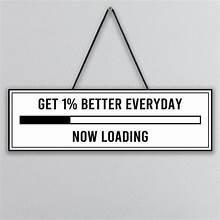
Financial literacy is the difference between the rich and the poor
Esseen tyyppi: Yksilöessee / 2 esseepistettä.
KIRJALÄHTEET
| KIRJA | KIRJAILIJA |
|---|---|
|
Rich Dad Poor Dad |
Robert Kiyosaki |
First book essay here, let’s go!
My first read in Proakatemia was Rich Dad Poor Dad which is a personal finance book written by Robert Kiyosaki in 1997. I decided to read the book (or rather listen to because I prefer audiobooks) because in recent days I’ve grown an interest in investing and striving for a possible early retirement (FIRE). In the book the author relives his childhood with two dads and their different views of money and education. “Love of money is the root of all evil” vs “Lack of money is the root of all evil.”
The title of the book is slightly misleading, since Kiyosaki has only one dad, which he refers to as the poor dad in the book. The rich dad is his friend’s, Mike’s dad, whom Robert looked up to as a financial educator. The biggest difference between the two dads is financial literacy. Financial literacy is not taught in school so it’s up to you to learn how money works. Poor dad was well educated but financially illiterate, whereas the rich dad was quite the opposite. “The poor and middle-class work for money while the rich has money working for them.”
One of the main topics of the book is the difference between assets and liabilities. Quickly explained, assets generate money, liabilities eat up money. Assets can be for an example cash, stocks, property, machinery etc. The most usual liabilities include student loans, credit card loans and mortgage. Rich dad emphasizes the importance of acquiring assets and passive income. Passive income is a type of income which doesn’t require one’s physical presence. For an example, rental income qualifies as passive income. “Poor people acquire liabilities, rich people acquire assets”
Rich Dad Poor Dad is quite repetitive and doesn’t provide the reader with actual investment hints, instead it focuses on obvious statements such as acquiring assets, keeping expenses low and avoiding liabilities. The author also belittles the risk involved in investing, suggesting that you must know your investment through and through. Investing is risky only if you don’t know what you’re investing in. In my opinion, his way of thinking is naïve and potentially financially dangerous. I would still recommend this book for anyone interested in personal finance, since the mindset of the author is on point.
The book raised some questions about my personal finance. As a student, my income is limited so I haven’t had many opportunities of growing my asset column. Whenever I have some extra money laying in my bank account, I tend to spend it on clothes, food and travelling. While reading this book I started to scrutinize my financial situation and I came to a conclusion that I should start saving or investing my leftover money instead of purchasing unnecessary novelties and luxuries. Maybe my next essay will be about investing, we’ll see.
Writing this free-form book essay was a nice variation to formal reports and essays and I’m looking forward to reading lots of interesting books during my rather short stay in Proakatemia! (We are also planning to record a podcast on personal finance with my Avanteam-colleague Aleksander Tuckett, so stay tuned!)



